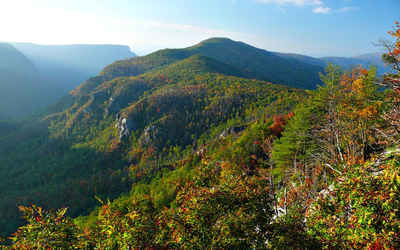North Carolina Counties
North Carolina is divided into one hundred counties. The establishment of North Carolina counties stretches over 240 years, beginning in 1668 with the creation of Albemarle County and ending with the 1911 creation of Avery and Hoke counties. Five counties have been divided or abolished altogether, the last being Dobbs County in 1791.Wake County, North Carolina
Wake County Education, Geography, and History
Wake County is a county in the state of North Carolina. As of July 1, 2013, the population was 974,289, making it North Carolina's
second-most populated county. Its county seat is Raleigh, which is also the state capital.
Wake County is part of the Research Triangle metropolitan region, which encompasses the cities of Raleigh and Durham, the towns of Cary and
Chapel Hill, and their surrounding suburban areas. The regional name originated after the 1959 creation of the Research Triangle Park,
originally anchored by Raleigh, Durham and Chapel Hill.
Etymology - Origin of Wake County Name
It was named in honor of Margaret Wake, wife of William Tryon.
Demographics:
County QuickFacts: CensusBureau Quick Facts
Wake County History
Wake was formed in 1771 from Johnston, Cumberland and Orange. The act became effective March 12,1771. It was named in honor of Margaret Wake, wife of William Tryon. It is in the east central section of the State and is bounded by Johnston, Harnett, Chatham, Durham, Granville and Franklin counties. The present land area is 831.92 square miles and the population in 2000 was 627,866. The first courthouse was erected at what is known as Bloomsbury. It was called Wake County Court House until 1792, when Raleigh was established and was made the capital of the State. Raleigh is the county seat.
Geography: Land and Water
As reported by the Census Bureau, the county has a total area of 857 square miles (2,220 km2), of which 835 square miles (2,160 km2) is
land and 22 square miles (57 km2) (2.6%) is water.
Wake County is located in the northeast central region of North Carolina, where the North American Piedmont and Atlantic Coastal Plain regions
meet. This area is known as the "fall line" because it marks the elevation inland at which waterfalls begin to appear in creeks and rivers. As
a result, most of Wake County features gently rolling hills that slope eastward toward the state's flat coastal plain. Its central Piedmont
location situates the county about three hours west of Atlantic Beach, North Carolina, by car and four hours east of the Great Smoky
Mountains.
Bodies of water that are located in Wake County include Lake Crabtree, Crabtree Creek, Lake Johnson, the Neuse River, and portions of Falls
Lake and Jordan Lake.
Neighboring Counties
Bordering counties are as follows:
- Granville County - north
- Franklin County - northeast
- Nash County - east
- Johnston County - southeast
- Harnett County - southwest
- Chatham County - west
- Durham County - northwest
Education
Higher education
Wake County is home to eight institutions of higher learning. They include Meredith College, North Carolina State University, Campbell
University's Norman Adrian Wiggins School of Law, Peace College, Saint Augustine's College, Shaw University, Southeastern Baptist Theological
Seminary and Wake Technical Community College.
The State Library of North Carolina is an institution which serves North Carolina libraries, state government employees, genealogists, and the
citizens of North Carolina. There are two locations in Raleigh.
Primary and secondary education
Public education in Wake County is administered by the Wake County Public School System, the 17th largest public school district in the country with over 155,000 students. There are 27 high schools, 33 middle schools, 104 elementary schools and 8 specialized schools. In addition, nine charter schools and 31 private schools are located in the county.







